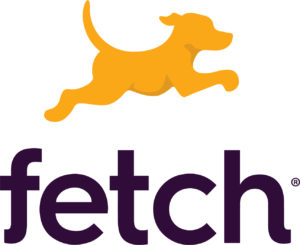Taking back control by moving analytics in-house
Alex Nunnelly
Panoramic

- Part 1 Taking back control by moving analytics in-house
Show Notes
Quotes
-
“I learned how there is a pressure on analytics teams as well as on organizations to maximize their returns on analytics. Data, tools and human capital can be costly so they want to make sure to maximize the return on those investments and more importantly be able to measure the value-add, the actions that were taken based on the insights derived from the data.” -Alex“There’s a huge imperative to be smart with your data but more importantly be efficient with the data. There is only so much you can do under the constraints of time, so I would always recognize day-to-day when analysts on my team were having to repeat this mundane, robotic and recurring tasks which are hundred percent necessary but also hundred percent automatable.” -Alex“The processes and workflows we have to prevent creating inefficiencies and minimizing returns for organizations are bucketed in three big categories. Those categories and workflows en map directly on to the capabilities of what we call our three engines of the platform.” -Alex“The first bucket of workflows is data engineering tasks which mainly consists of pulling in data from multiple platforms and putting it into one data model, bringing it into one workbook sowe can work together.” -Alex“So essentially, what you’re saying is that what Facebook might call a click is different from what Google calls a click and you need to reconcile the nomenclature of those two metrics and call them the same thing so you’re putting all your clicks in one bucket.” -Alex“This fundamental need to map was a huge manual task for my team but was very necessary if someone wanted cross-platform insights. And since mapping is so time-intensive, our ability to do it was often limited to just pull some of the reporting and as result in the fog of war of the day-to-day of the campaign we weren’t really able to act upon cross-platform insights.” -Alex“One of the key things Panoramic looks to solve is it provides a Rosetta Stone if you will, for translating these domain-specific languages into a more unified vocabulary which can then be used to tell a data story.” -Alex“One of the most important thing here is collaboration. Actually doing something about the insights. It’’s very different for an individual analyst to come into a conclusion than for you organization to reach a consensus. If you are looking to make decisions that are data-driven which results in moving money around or making new investments, then what you need is a consensus.” -Alex“That inefficiency around communication which really hampers any return on your analytics because an insight that is not acted upon is valueless in many ways beyond intellectual exercise.” -Alex“As people are looking to take ownership of the data itself, they need to, as a result, invest in analytics resources which, depending on the size of your enterprise may or may not be feasible. All of the optimization exercise I have described are very costly. So what we are looking to provide is kind of an end-to-end solution to help companies’ in-house analytics.” -Alex“So now what we are creating is continuity between all the entities, creating a shared space where the conversations and analysis can take place. That’s one of the key transformations where analytics isno longer a person, it’s a process.” -Alex“What Panoramic is looking to do is to ensure that a lot of the key contextual frameworks that are necessary to reach valid conclusions are automated and provided by the platform. The key thing that someone might not have is context and that’s what we look to provide.” -Alex“There’s a quote I like which is the only way we can avoid becoming automatons is by automating and I think one potential reaction you can imagine analysts having is fear or resentment where they focus more on what the computer can’t do than what it can do and really the goal here is not to automate the analysts out of existence but rather to allow their role to evolve where they can be more creative with their data storytelling.” -Alex
- Part 1 Taking back control by moving analytics in-house
Alex Nunnelly
Panoramic

Up Next:
-
Part 1Taking back control by moving analytics in-house
Today we're going to discuss the nuances and best practices for modernizing your analytics. Joining us is Alex Nunnelly, a Senior Director of Analytics at Panoramic, which is an enterprise SaaS company whose marketing intelligence platform addresses the key pain points marketers experience as a result of today's complex ecosystem of disparate data sources and marketing tools. In part 1 of our conversation, we are going to talk about taking back control by moving your analytics in-house.










